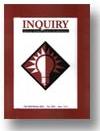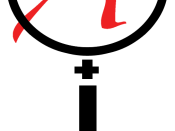Today's global marketplace requires leaders that can successfully transform their organizations. In the corporate world, innovative problem solving, critical analytical thought and sound decision-making key the success and dominance of leaders and organizations. This paper examines the relationship between critical thinking and the decision-making process, explains the course textbook position, and relates how both processes apply to the author's workplace.
Critical thinking involves the ability to analyze and assess information gathered through observations, reasoning, discussions with others, reflection or experience. This disciplined analysis guides critical thinkers to construct rational beliefs or substantiated opinions or to take actions. McCall and Kaplan (2001) define critical thinking in terms of three key points: the "awareness of a set of interrelated critical questions, [the] ability to ask and answer critical questions at appropriate times, and [a] desire to actively use the critical questions." This definition, though, is not a consensus definition, nor is it widely accepted.
Despite a massive body of research on critical thinking, no single definition exists. Commonly, definitions from noted scholars appear diametrically opposed. Robert Ennis (1995) defines critical thinking as "reasonable and reflective thinking that is focused on deciding what to believe or do." In contrast, John McPeck defines critical thinking in Critical Thinking and Education (1981) as the "skill and propensity to engage in an activity with reflective skepticism within the context of a discipline and the knowledge within a given field." These two vastly different definitions nonetheless highlight two important components of critical thinking. The first component involves the abilities and skills relevant to the proper understanding and evaluations of reasons, claims, and arguments. Both scholars characterize the second component as a propensity to apply critical thinking skills. The definitions provided by Ennis and McPeck also hinge on three key concepts in critical thinking analysis. Both use similar...


